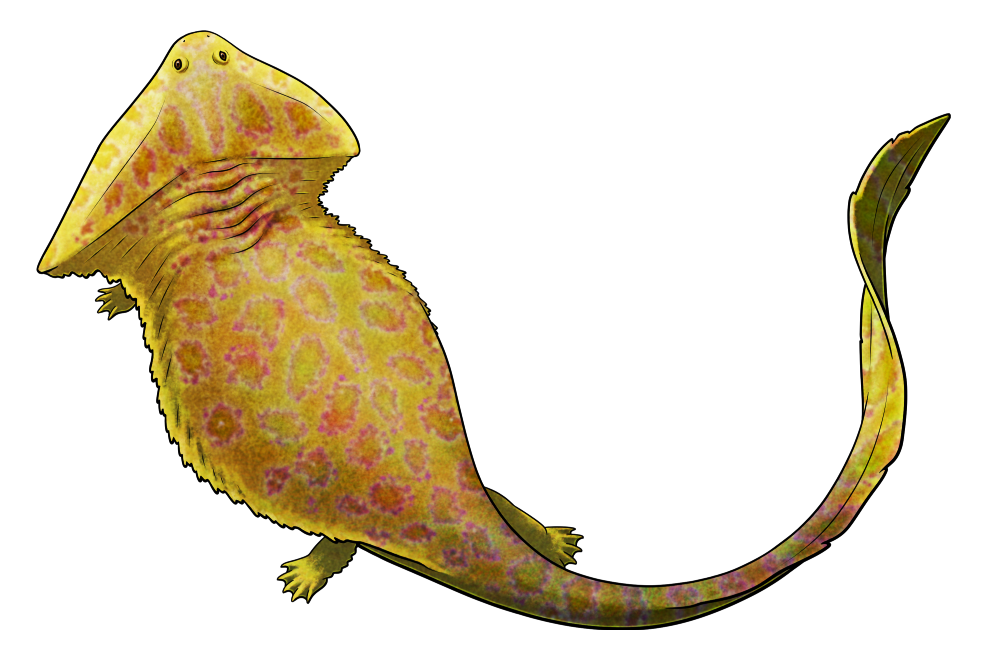With its bizarre boomerang-shaped skull, Diplocaulus is probably the most iconic ancient amphibian. (It even inspired the design of the pokémon Dragapult!) It was part of the lepospondyls, a diverse collection of early tetrapods mainly found in Europe and North America between the Early Carboniferous and the mid-Permian, about 350-270 million years ago.
But one species hung on a bit longer into the late Permian, about 259-254 million years ago, and this late-surviving lepospondyl was perhaps the oddest of them all.
Diplocaulus minimus was the only lepospondyl known from the supercontinent of Gondwana, found in what is now Morocco in northern Africa. About 70cm long, around half of which was its long tail, it had the distinctive elongated skull of a diplocaulid – but in a bizarrely asymmetrical shape.
The left prong of its skull was long and tapering, but the right was shorter and more rounded. This doesn’t seem to have been due to individual deformity or distortion of the fossil material, since more than one skull has been found with the same features, but the reason for such a striking amount of asymmetry in this species is unknown.
Diplocaulids’ head shapes are thought to have acted as hydrofoils, providing lift while they were swimming. Perhaps Diplocaulus minimus‘ much more wonky skull means this species wasn’t relying on that hydrodynamic function as much as its relatives, and something else was going on with its ecology.
…Although, that weird head does bear a surprising resemblance to a proposed asymmetric “flying wing” aircraft design from the 1950s, so it might have worked better for underwater flight than it seems at first glance.

